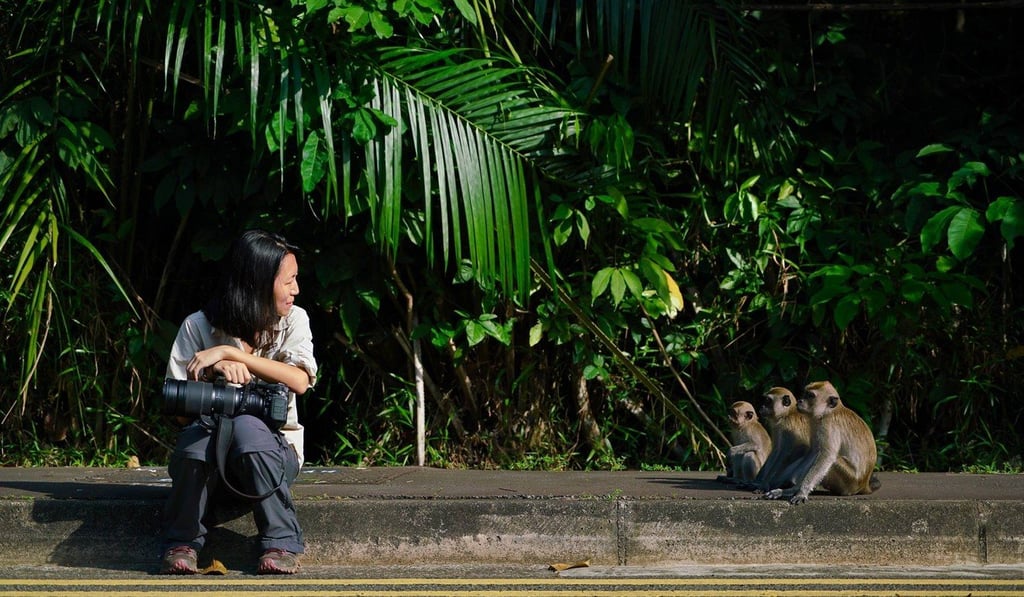Singapore’s rarest monkeys need love and space to live, says local scientist devoted to saving primates
- Singaporean scientist Andie Ang searches the wildest parts of the Lion City’s for signs of the extremely rare Raffles’ banded langur
- As well as helping the surviving 60 langurs left in Singapore, she also travels around Asia to document other monkey species

Hot on the trail of monkey droppings, scientist Andie Ang spends most weekdays in the wildest parts of Singapore. Clad in black, she usually carries a camera with a telephoto lens, binoculars, a raincoat and zip lock bags.
Ang is looking for evidence of the Raffles’ banded langur, a species of critically endangered leaf eating monkeys found only in Singapore and southern Peninsular Malaysia.
The langurs’ droppings are a treasure trove of DNA information. These faecal samples provide researchers with important data on the genetic diversity of the langur, the types of plants they are eating and the population’s parasite load. The information helps scientists devise measures to assist with the conservation of the monkeys and their forest habitat.
Now 34, Ang has been fond of monkeys for a long time. When she was 10 years old, her family was given a juvenile African vervet monkey. Not grasping the difference between wild animals and domestic pets, the young Ang raised the monkey – affectionately named “Ah Boy” – as if he was a pet dog.

She took him on daily walks around her Singapore neighbourhood after school and fed him home-cooked food. Ah Boy would climb on her shoulders to groom her scalp. But as the monkey grew bigger, he became increasingly miserable chained up in her flat and Ang made the painful decision to let him go.
With the help of the Animal Concerns Research and Education Society (Acres), a Singapore-based animal conservation group, in 2004 she raised the funds to repatriate Ah Boy to a sanctuary in Zambia. It broke her heart to bid farewell to her beloved friend, says Ang.